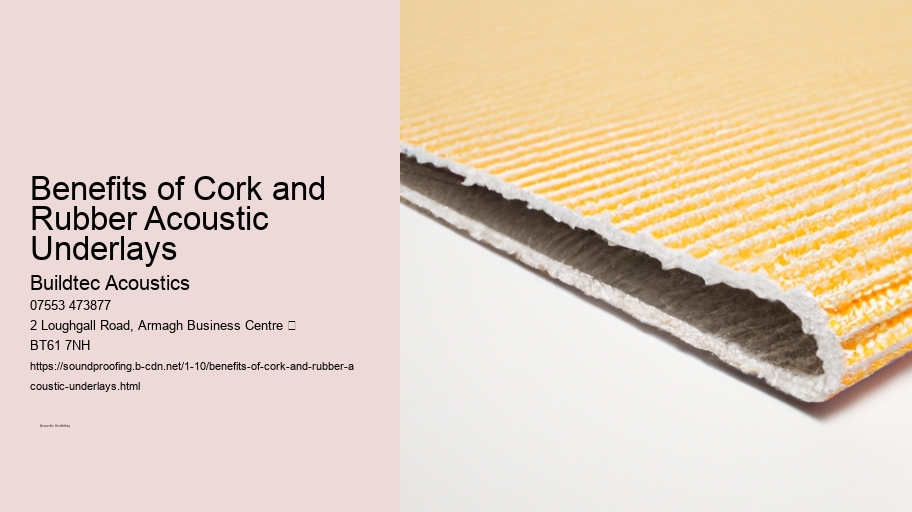

Airborne noise, such as music or conversations, can be reduced by selecting underlays with higher sound transmission class ratings. For example, underlays installed beneath medium-density fibreboard (MDF) or gypsum drywall help absorb vibrations and reduce unwanted sound transmission. In residential buildings, whether in a semi-detached house or an apartment, acoustic underlays are often installed under laminate flooring, hardwood, or carpets to reduce noise transmission through walls, ceilings, and stairs.
Buildtec Acoustics offers a range of acoustic underlays to meet different needs, including those designed for use with underfloor heating systems. In commercial settings, reducing noise pollution creates a more productive and pleasant work environment, boosting overall efficiency.
Buildtec Acoustics offers underlays made from environmentally friendly materials, such as cork, recycled crumb rubber, and natural wool. In conclusion, acoustic underlays from Buildtec Acoustics offer an effective solution for soundproofing floors, improving room acoustics, and enhancing overall comfort.
By reducing both airborne and impact noise, these underlays help create a peaceful environment, whether at home, in the office, or in commercial buildings. These options promote sustainability by reducing reliance on virgin materials and minimizing overall pollution. Additionally, these materials are low in volatile organic compound (VOC) emissions, contributing to a healthier indoor environment.
Acoustic underlays are also effective for vibration isolation, particularly in areas with significant sources of vibration, such as near heating equipment or heavy appliances. They are particularly effective when used with materials like ceramic tiles or floating floors, providing both sound insulation and comfort underfoot.
Floating floor systems also benefit from acoustic underlays, which provide an extra layer of soundproofing beneath the flooring material. Whether in a single-family detached home or a semi-detached house, installing acoustic underlay ensures that everyday activities do not negatively affect others.
From managing noise pollution to improving energy efficiency, acoustic underlays are a versatile solution that supports both functionality and aesthetics in modern building design. The choice of acoustic underlay depends on the type of noise that needs to be managed.
Providing further details on the benefits of acoustic underlays.

Posted by Francis Mckenna on
In residential buildings, whether in a semi-detached house or an apartment, acoustic underlays are commonly installed under laminate flooring, hardwood, or carpets to reduce noise transmission through walls, ceilings, and stairs. Whether in a single-family detached home or a semi-detached house, installing acoustic underlay ensures that daily activities do not negatively affect others in the building. In conclusion, acoustic underlays from Buildtec Acoustics offer an effective solution for soundproofing floors, enhancing room acoustics, and improving overall comfort.
During renovations, installing acoustic underlays can significantly improve the acoustic properties of existing floors, whether in residential or commercial settings. Installing acoustic underlays beneath carpets in office spaces helps mitigate foot traffic noise and other disturbances, improving the room's dynamics.
The choice of acoustic underlay depends on the type of noise that needs to be managed. The primary purpose of acoustic underlays is to manage both impact noise and airborne sound.
In commercial settings, reducing noise pollution creates a more productive and pleasant work environment, boosting overall efficiency. This process involves converting sound energy into heat, which then dissipates harmlessly.
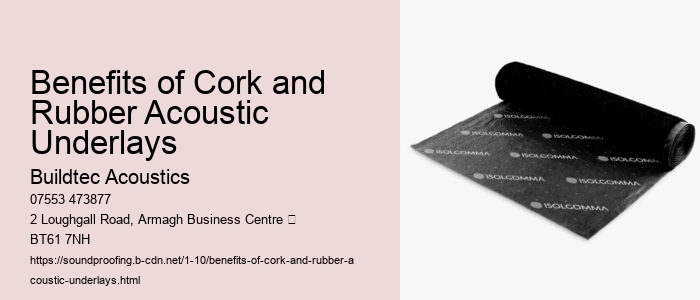
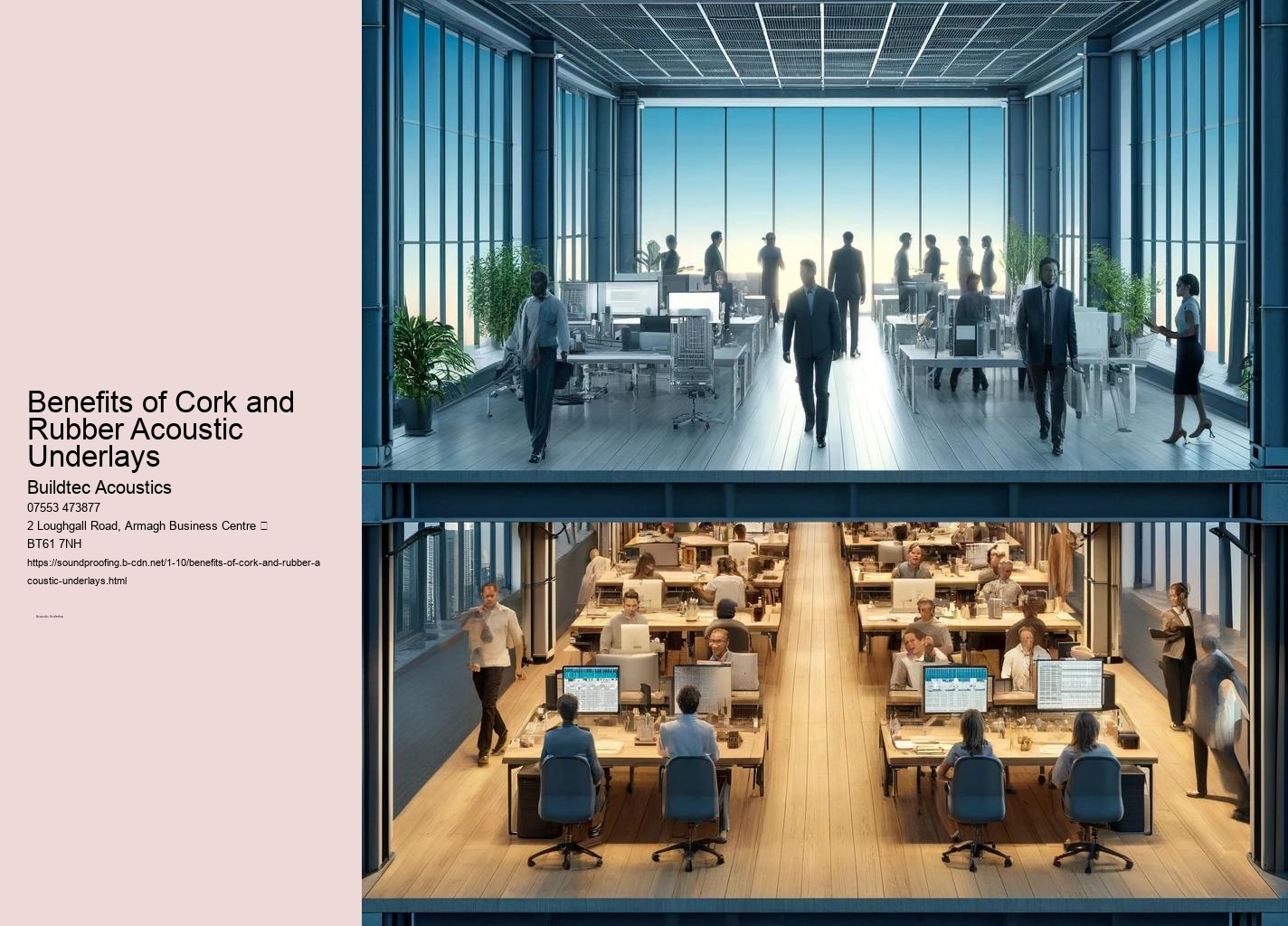
Buildtec Acoustics offers a variety of acoustic underlays to meet different needs, including those designed for underfloor heating systems. Buildtec Acoustics offers underlays made from environmentally friendly materials, such as cork, recycled crumb rubber, and natural wool. They are particularly effective when used with materials like ceramic tiles or floating floors, providing both sound insulation and comfort underfoot.
This process involves the transformation of sound energy into heat, which then dissipates harmlessly. When installing an acoustic underlay, it is important to ensure that the subfloor-whether concrete, particle board, or cement-is clean, level, and dry.
Buildtec Acoustics provides underlays with properties that address either airborne or impact noise. Buildtec Acoustics provides a comprehensive range of acoustic underlays designed to address both airborne and impact noise, making them suitable for various flooring applications, such as wood flooring, ceramic tiles, and laminate flooring.
In commercial settings, reducing noise pollution creates a more productive and pleasant work environment, enhancing overall efficiency. Underlays help isolate vibrations, preventing them from being transmitted through the building structure and reducing their impact on adjacent rooms or units.
Floating floor systems also benefit from the use of acoustic underlays, which provide an additional layer of soundproofing beneath the flooring material. Most underlays come in sheet or roll form and can be cut to size with simple tools like a utility knife. Environmental considerations are an important aspect of acoustic underlay design.
Buildtec Acoustics offers a comprehensive range of acoustic underlays designed to manage both airborne and impact noise, providing versatile solutions for flooring applications, including wood flooring, ceramic tiles, and laminate flooring. Before installing an acoustic underlay, it is important to ensure that the subfloor-whether concrete, particle board, or cement-is clean, level, and dry.
This allows consumers to maintain their desired aesthetics without sacrificing soundproofing performance. Adhesive or double-sided tape can be used to secure the underlay in place, ensuring tight seams between pieces to prevent gaps that could reduce performance.
This allows consumers to achieve their preferred aesthetics without sacrificing soundproofing performance. perimeter Acoustic underlays do not compromise the aesthetics or design of the finished floor.
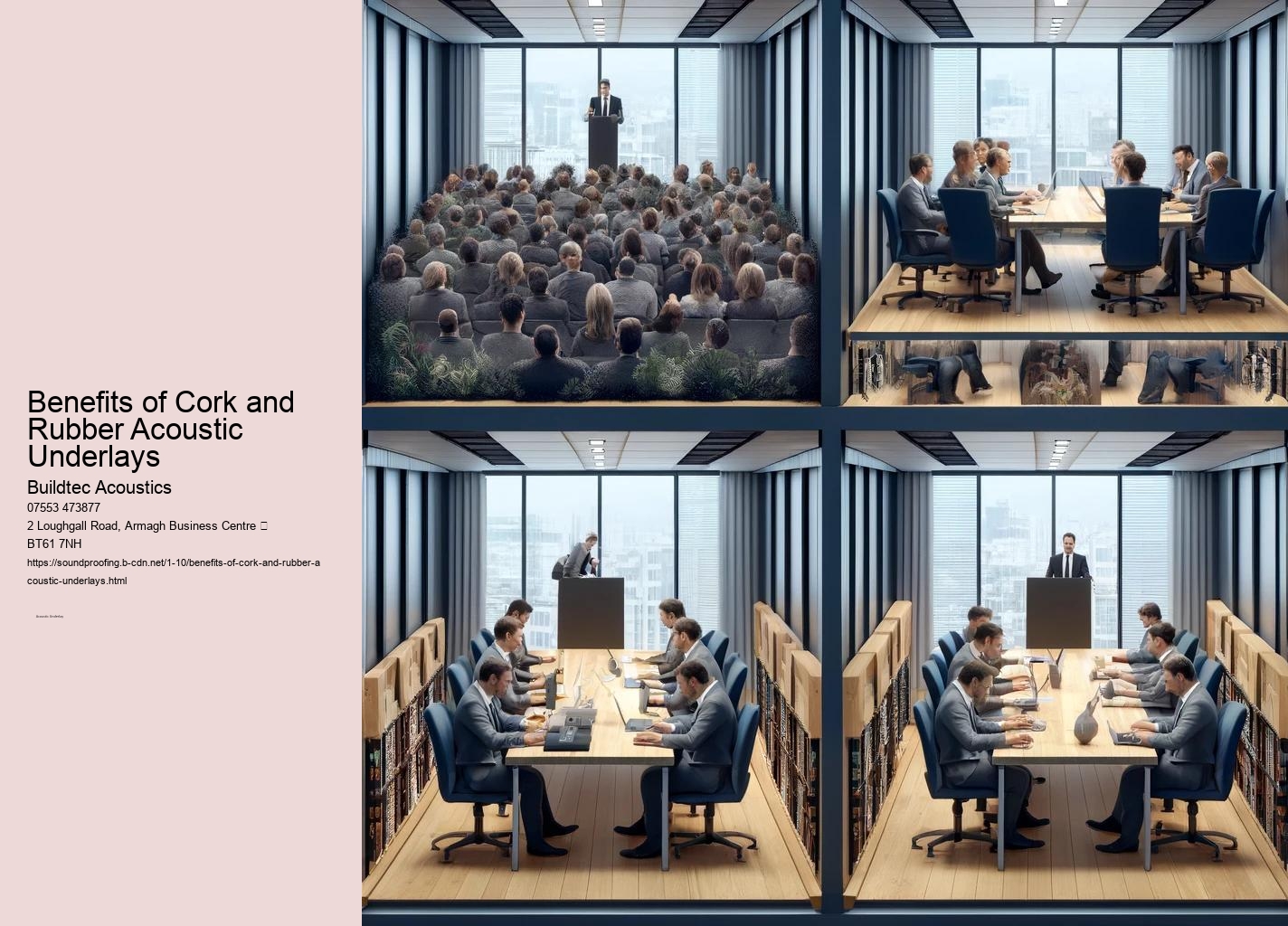
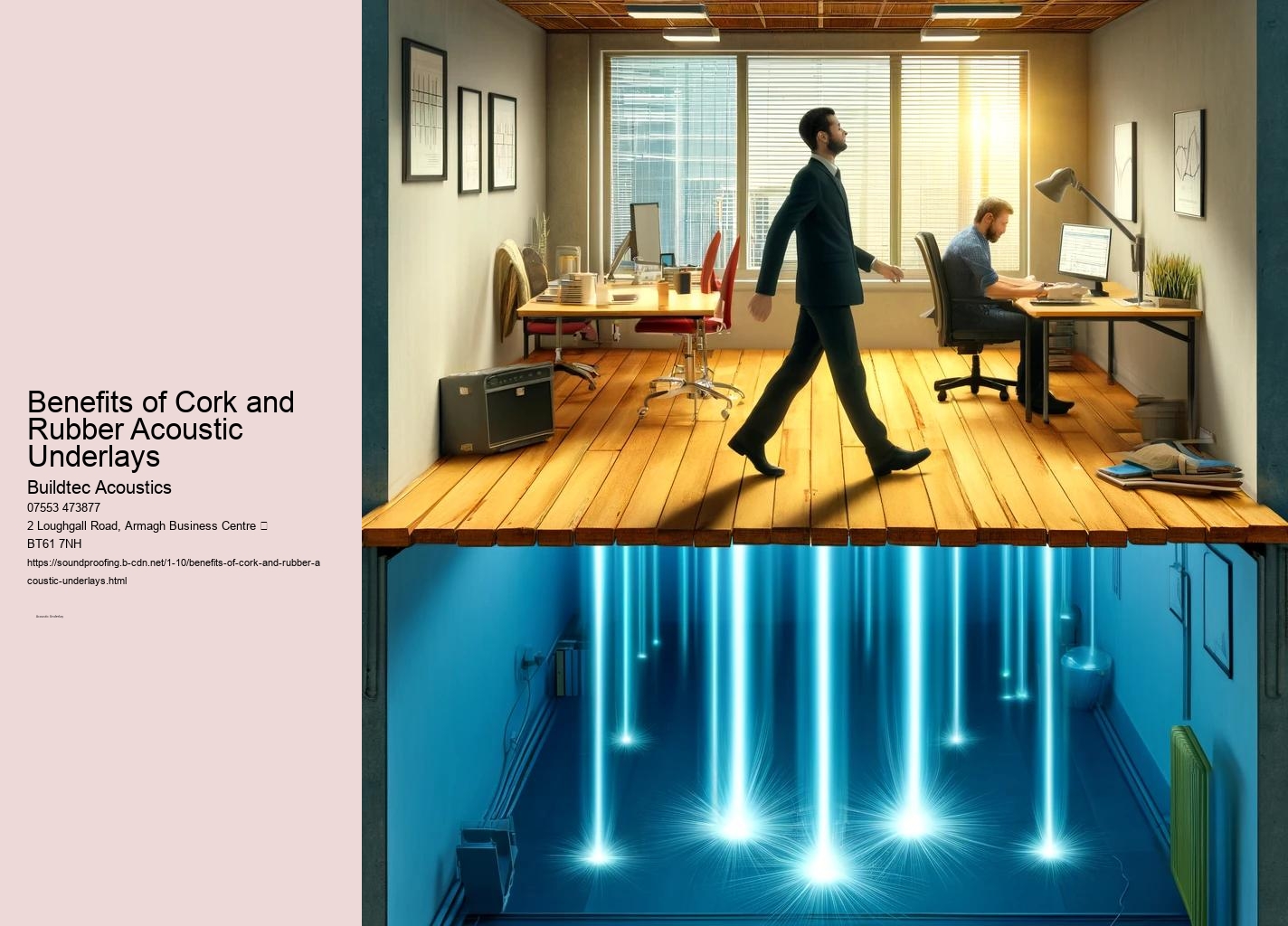
Acoustic underlays are also beneficial for vibration isolation, especially in spaces where there are significant sources of vibration, such as near heating equipment or heavy appliances. Buildtec Acoustics provides underlays made from environmentally friendly materials, such as cork, recycled crumb rubber, and natural wool. In conclusion, acoustic underlays from Buildtec Acoustics offer an effective solution for soundproofing floors, improving room acoustics, and enhancing overall comfort.
The installation of acoustic underlays is straightforward and can be performed by both professionals and do-it-yourself (DIY) enthusiasts. Hard surfaces, such as hardwood and laminate, tend to amplify sounds like footsteps, leading to unwanted echo and reverberation. Impact noise, such as footsteps on laminate flooring or vibrations from appliances, can be minimized using dense materials like natural rubber or foam.
The use of recycled fibers and materials encourages recycling while reducing the environmental footprint of soundproofing installations. The use of recycled fibers and materials helps encourage recycling while minimizing the environmental footprint of soundproofing installations.
Some underlays are certified by Leadership in Energy and Environmental Design (LEED) standards, promoting sustainable building practices. In residential buildings, whether in a semi-detached house or an apartment, acoustic underlays are often installed under laminate flooring, hardwood, or carpets to reduce noise transmission through walls, ceilings, and stairs.
The materials used in acoustic underlays, such as foam, cork, and natural rubber, are highly effective at reducing vibrations and controlling noise. By choosing the right product for the specific noise control requirement, homeowners and businesses can create a quieter, more comfortable atmosphere. heating equipment
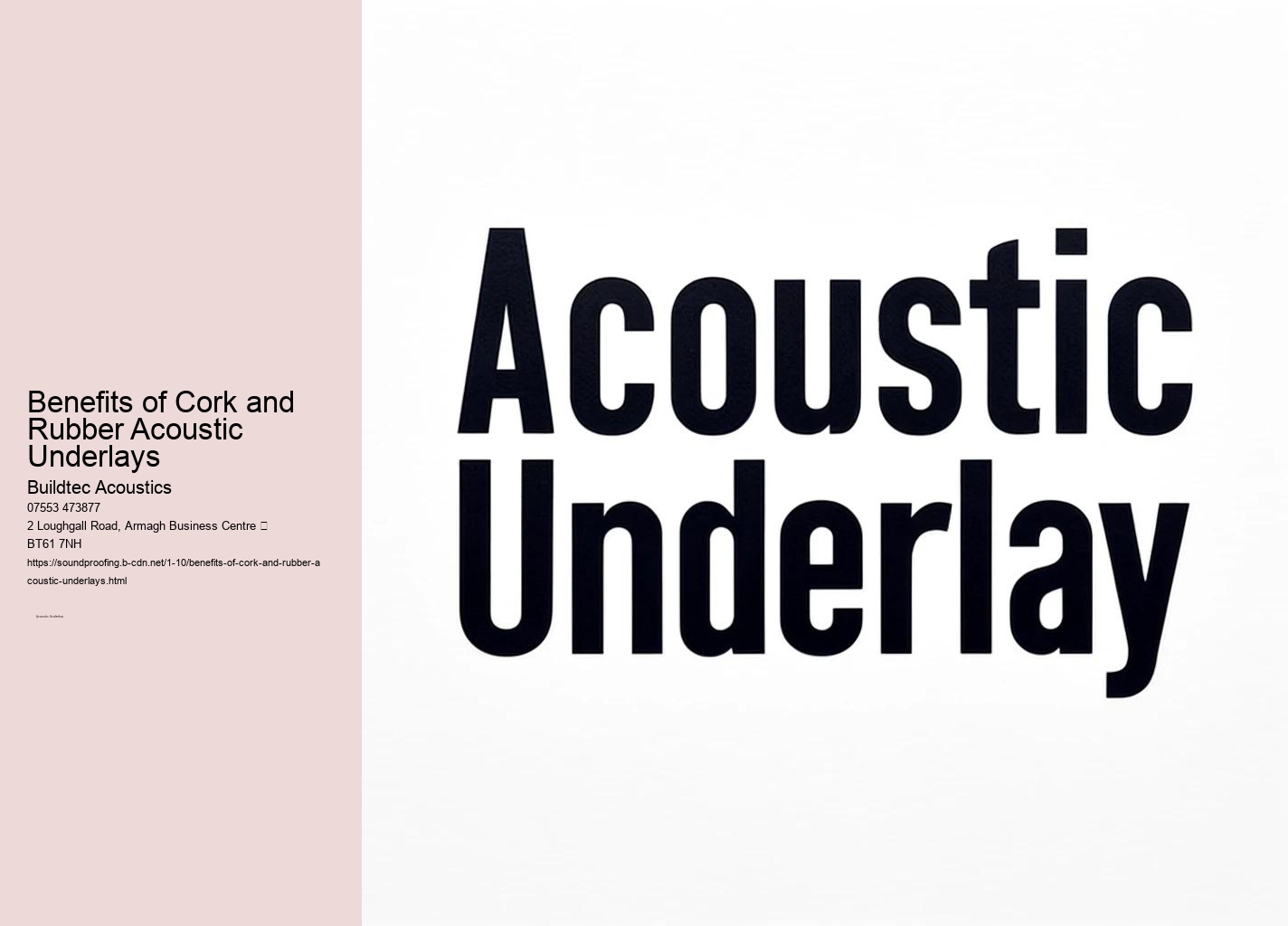
Yes, acoustic underlays provide thermal insulation by adding an extra layer between the flooring and the subfloor. This helps to maintain a comfortable temperature in the room and can also contribute to energy efficiency by reducing heat loss.
Acoustic underlays are highly effective in reducing both airborne and impact noise. Their ability to absorb sound vibrations makes them ideal for improving room acoustics and creating a quieter environment. The effectiveness varies depending on the material and thickness of the underlay.
No, acoustic underlays are installed beneath the visible flooring material, meaning they do not affect the appearance of your floor. They work effectively without altering the aesthetics of the chosen flooring, whether it is hardwood, laminate, or carpet.